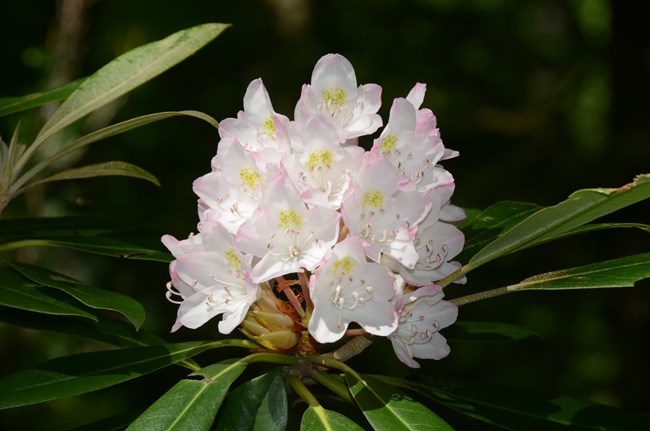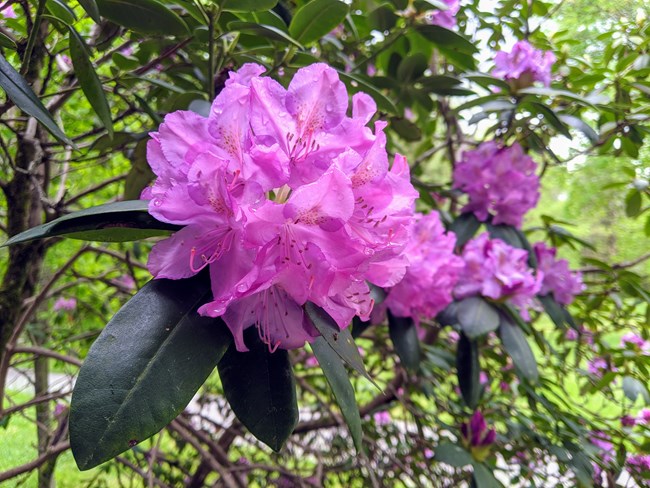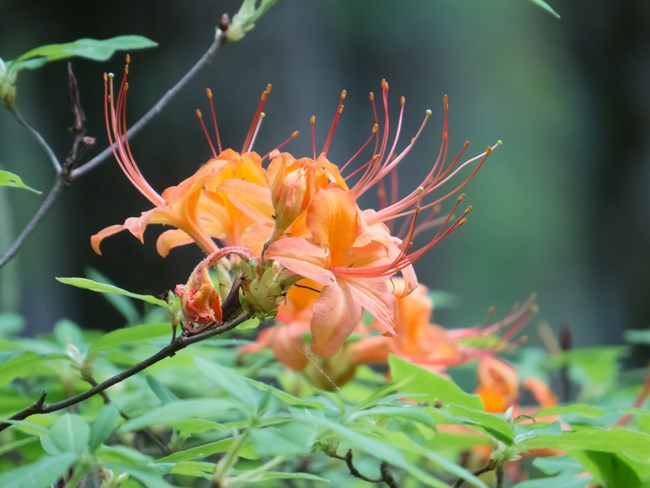|
The park’s flowering shrubs put on a colorful show in spring and summer. Eleven species of native shrubs in the Rhododendron genus live in the park: rosebay rhododendron, Catawba rhododendron, Carolina rhododendron, Piedmont rhododendron, flame azalea, smooth (or sweet) azalea, Cumberland azalea, pink azalea, early azalea, clammy (or swamp) azalea, and minniebush. One non-native Rhododendron species, hiryu azalea, is also found in the Smokies. Together they cover thousands of acres in the national park. 
Jack Williams Rosebay RhododendronRosebay rhododendron is the most common rhododendron in the Smokies. It thrives around streams and in ravines at elevations below 5,000 feet (1,524 meters). Rosebay’s big clumps of whitish flowers appear in June at the lower elevations and from July into August at the middle altitudes. 
NPS Photo Catawba RhododendronCatawba is the rhododendron of the Smokies’ high mountains. It is found only at elevations greater than 3,500 feet (1,067 meters) in the park, often alongside other rhododendrons on treeless shrublands call heath balds. Catawba’s leaves are thick, shiny, and evergreen, much like those of rosebay rhododendron. However, Catawba leaves are not as long and hold a more rounded shape. Catawba rhododendron’s magenta flowers appear to paint rhododendron-covered ridges with a beautiful, purple wash. 
Warren Bielenberg Flame AzaleasWhen pioneer botanist William Bartram discovered flame azaleas in 1791, he described the plant as “certainly the most gay and brilliant flowering shrub yet known.” |
Last updated: October 21, 2022
